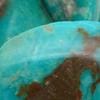Turquoise and Rare Stone Information
North American Turquoise Carico Lake Turquoise is named after the location of the Nevada mine in a dried up lake bed. Known for it's varied shades of brillaint green which is due to the zinc content. It is considered highly unique & collectible. Carico Lake turquoise is limited in availability because the mine is primarily a gold producing mine which only produces turquoise occasionally.  Castle Dome/Pinto Valley Turquoise comes from the Castle Dome copper mine which was originally opened in 1943 and turquoise mined then was called Castle Dome turquoise. The mine was closed in 1953 and later re-opened as the Pinto Valley Mine. The mine was bulldozed over in the late 1970's and all material on the market today comes from some rockhounds "old stash" With beautiful color variations ranging from sky-blue to bluish-green with the blue color being predominate, this turquoise is truly a high quality turquoise and a collectable treasure! Castle Dome/Pinto Valley Turquoise comes from the Castle Dome copper mine which was originally opened in 1943 and turquoise mined then was called Castle Dome turquoise. The mine was closed in 1953 and later re-opened as the Pinto Valley Mine. The mine was bulldozed over in the late 1970's and all material on the market today comes from some rockhounds "old stash" With beautiful color variations ranging from sky-blue to bluish-green with the blue color being predominate, this turquoise is truly a high quality turquoise and a collectable treasure! The Damale Turquoise mine is located thirty miles from Austin, Nevada. Damale Turquoise is distinctive because of the zinc content that turns the stone yellow-green and increases its hardness. The matrix of Damale is webbed with a dark brown to black matrix. It’s availability is limited because the mine is small. Due to its rare color, Damale is a collectible turquoise.  Dry Creek Turquoise gets its color from the heavy metals in the ground where it forms. The Dry Creek Turquoise mine is located outside of Austin, Nevada in Lander County and is on the opposite side of the mountain from the Godber (Brunham) Dry Creek turquoise mine. The Godber (Brunham) Dry Creek turquoise mine is towards Eureka and the Dry Creek turquoise mine is towards Battle Mountain, Nevada. Both mines have produced the light pastel (milky) blue turquoise material. Blue turquoise forms when there is copper present and green turquoise forms where iron is present, the turquoise from the Dry Creek mine has no heavy metals present, thus the pastel color. This is a very rare occurrence. These mines produce a creamy pastel-blue and blue-white turquoise, very hard, gemmy and available only in very small quantities. The matrix in Dry Creek Turquoise is typically light golden or brown-gray to gray-black. This is definitely collectors turquoise!  Emerald Valley turquoise mine is a newer active, small-scale mine located in southwestern Nevada near the Royston deposits. The color varies from a deep forest green to bright grass green and sometimes blue hues. It is sometimes highlighted by golden brown or a beautiful copper matrix. This mine is still producing.!  The Fox Turquoise mine in Nevada was first owned by the Indians and was purchased early on by white men for mining. It is one of the oldest and largest turquoise mines in this particular area. Today Fox Turquoise is produced in many shades of beautiful blue, wonderful greens and aqua's that may have white marks, deep black matrix, or just stone. The product varies from fine vein material to chunky, nuggets with wonderful natural water webbing.  The Kingman Turquoise is found in a copper mine northwest Arizona (known as the Kingman Mine). Kingman turquoise range in colors which run from light blue to very dark blue and also various tints of green. The matrix is from light brown to black and frequently flecked with pyrite. 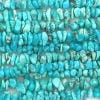 The Lone Mountain Turquoise mine is located in Nevada and is only active occasionally, this mine has also been known as Blue Jay Mine. Lone Mountain Turquoise ranges in color from clear blue to spider-web. Lone Mountain Turquoise is considered very collectible, holds its beautiful blue color well and doesn't fade.  Morenci Turquoise is well known and considered to be very collectible. It is high to light blue in color and is very difficult to obtain now because the Arizona mine is depleted. Morenci has an unusual matrix of irregular black pyrite that, when polished, often looks like silver. 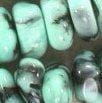 New Lander Turquoise is mined in Northern Nevada near the Lander Blue Mine, but differs from Lander Blue turquoise in that it has a green to yellow-green color, often with a beautiful dark spiderweb matrix. New Lander Is known for it’s wild patterns and color characteristics. This turquoise is so very unique that it is hard to find the same type twice. It consists of turquoise mixed with calcasiderite, varasite, and faustite. All of these combine to form one very fun and unique stone.  The Number 8 Turquoise mine in Northern Nevada has produced some of the finest turquoise in beautiful green and blues shades and was a well known turquoise mine in the 40's. The product from this mine was some of the most sought after in the Nevada area and it is known for it's spider-web black or golden matrix. The mine was depleted in 1961 and is no longer producing today.  The Pilot Mountain Turquoise mine in northern Nevada is still producing and is worked by one family. Pilot Mountain Turquoise is sought after for its deep blue-green colors and often will show a mixing of blue and greens in the same stone.  The Pixie Turquoise Mine is in northern Nevada and has not been active for some time. This Pixie Turquoise is spectacular shades of light and dark greens, it is vein material and is hard to get. These specimens will make wonderful collectors pieces!  Royston Turquoise is known for its beautiful colors ranging from deep green to rich, light blues set off by a heavy brown matrix. The mine is in Nevada and is still producing a limited amount of turquoise that is considered to be very collectible.  Sleeping Beauty mine located in Arizona, is the largest in North America and is till operating. Sleeping Beauty Turquoise is noted for its bright blue color with moderate black to no matrixing and is the favorite turquoise for use in inlay work of the Zuni Indians.  Turquoise Mountain Turquoise comes from a mine in northwestern Arizona that was closed in the 1980s. It has light to high blue, with both webbed and non-webbed matrix. This turquoise has also been sold under the name of "Old Man" Turquoise and the same mine also produced "Birds Eye" Turquoise. |
What is Turquoise?Turquoise is a hydrous copper aluminum sulfate. It has been mined from at least 6000 BC by early Egyptians. The use of turquoise as a beautiful ornamental decoration can be traced to Native Americans as well as Persians. Turquoise can be sky blue to apple green and any shade of blue, green or teal in between. Being a fairly soft stone (5.5-6.5 on the mohs scale), turquoise often is not suitable for cutting into stones and beads used for jewelry applications and that is why 95% of the turquoise for sale on the market today has been "stabilized" (a process using pressure and heat to fill the microscopic gaps in the stone with plastic resin, thus making the stone hard enough to cut and polish). The mineral turquoise is formed by a chemical reaction which occurs when water containing specific minerals such as copper and aluminum leak through a rock. Varying amounts of Copper and iron change the color shades. The copper is what gives the mineral its blue coloring and high iron levels mean greens and yellows predominate. Most of the time, turquoise occurs as vein or seam fillings, and as compact nuggets; that are mostly small in size. Different mines are known for their color shades, but no matter what country, turquoise is comprised of the same minerals and the beauty transcends the boundaries of location. Some turquoise contains inclusions of its host rock (known as matrix) that appear as black or brown spider-webbing or patches within the material. See turquoise collection HERE Quality and Grades of Turquoise:Turquoise is a hydrated aluminum copper phosphate that often contains iron. Turquoise has been popular since prehistoric times and has been used in jewelry dated from 5000 BC. It is mined in Nevada, Arizona, New Mexico, China, Peru, Chili, Mexico, Persia (Iran) and other areas. There are many different qualities and materials marketed as turquoise.
|
Gemstones from American Mines

Utah Tiffany Stone - comes only from the Brush Wellman beryllium mine in the Western deserts of Utah. The mine is not public for collecting and very little of this material is available. It is a soft to hard Opalized stone composed of predominantly Opalized fluorite (blues, purples and whites), often with many other minerals such as Agate, Dolomite, Rhodonite, Manganese oxide, Beryllium and others. It often has a "crackled" appearance and is considered one of the most scarce, beautiful and unusual stones in the world.
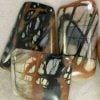
Utah Picasso Marble is a common building stone, it is a classic sculptors stone. Some marbles are famous such as Italian white and Belgian black marble. The colors vary and may be found in pinks, yellows, and browns. Marble is a soft rock and yet dense in structure. It was once limestone in the Precambrian era. The sedimentary limestone masses were sometimes contacted by hot magnas and the pressure altered the limestone. Other minerals from the magna then infiltrated the limestone causing feathery lines and beautiful designs such as Picasso Marble found in Beaver County, Utah. The scenic effect and color contrast in black and gold has made this marble a popular cutting rock for the lapidarest.

Utah Septarian Nodules – Septarians were formed millions of years ago when the Gulf of Mexico reached what is now Southern Utah. Decomposing sea life, killed by volcanic eruptions, had a chemical attraction for the sediment around them, forming mud balls. As the ocean receded, the balls were left to dry and crack. Because of their bentonite content they also shrank at the same time trapping the cracks inside. As decomposed calcite from the shells was carried down into the cracks in the mud balls, calcite crystals formed. A thin wall of calcite was transformed into aragonite separating the bentonite heavy clay exteriors from the calcite centers. Because of this, the nodules are called Septarians.

Utah Wonderstone – Rhyolite is volcanic. This particular variety was once a very fine volcanic ash. Through pressure and time this ash became rock hard as the colorful chemicals such as iron in the earth seeped through and swirled into a glorious design producing a smooth texture for a soft, desireable cutting material. This wonderstone is only found in the fishlake mountains of Utah near Salina, Utah, Sevier county.
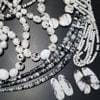 White Buffalo stone (NV) ... a lot of sellers call it White Buffalo Turquoise, but it is NOT turquoise in makeup though it was discovered in a turquoise mine in Tonapah, Nevada. The white stone is surrounded by black and brown chert which creates beautiful patterns and matrixing. Beware that howlite is is often represented as White Buffalo, but it is more of a cream white with grey erratic veining and not black. Howlite is very common and White Buffalo comes from only one mine in Nevada.
White Buffalo stone (NV) ... a lot of sellers call it White Buffalo Turquoise, but it is NOT turquoise in makeup though it was discovered in a turquoise mine in Tonapah, Nevada. The white stone is surrounded by black and brown chert which creates beautiful patterns and matrixing. Beware that howlite is is often represented as White Buffalo, but it is more of a cream white with grey erratic veining and not black. Howlite is very common and White Buffalo comes from only one mine in Nevada.
To learn about the myth of White Turquoise ... read this article by the Native American Jewelry tips web site

Wild Horse (AZ) is the name given to this stone, whose geological name is magnesite which is a mixture magnesite/hematite. This stone that was discovered in the mid-90's near the Globe copper mine in the Gila wilderness area of southern Arizona and only comes from there. Only a few years after the mine was opened, they closed it again, so any material on the market today has been stashed away in some prospectors garage. Some have called it Wild Horse Turquoise but it is NOT turquoise! Since so far, there only seems to be one source for Wild Horse and also because of it's beauty . . . it has retains a high value and is a remarkably popular.
Primavera Stone (AZ) - Primavera stone is mined in Arizona from a Gold, Silver, Lead and Copper mine. Completely natural in color formations and patterns, it is a combination of the many minerals including yellow wulfinite, blue/green chrysocolla, green luddenite, neon green fornacite and more including quartz. These mineral combinations produce a huge variety of vibrant shade of greens with some yellow ... really cool fr spring designs.
Other Rare & Hard-to-find Gemstones

Gaspeite – We are pleased to offer, hard to come by Gaspeite beads! A light, almost apple green color is quite unique and some varieties are almost a neon green. It may contain tan to brownish patches of matrix which gives it a distinctive character. This stone is named for the location of the original discovery in Gaspe Peninsula, Quebec, Canada where material was found that was NOT suitable for the jewelry industry. We only have one source for this treasured stone and he tells us that the last discovery of "cuttable" material (meaning hard enough and of good quality for use in jewelry & beads) was in 1990 in Weegemoogha, Australia. This discovery was a 40 ton block of Gaspeite, with only 27 tons of cuttable material, so YES the availability of this stone will eventually run out to the jewelry industry. It is considered both RARE and collectable. Gaspeite has a hardness of 5.

Larimar, the Gemstone of the Caribbean, is only mined in one location in the Dominican Republic and is therefore highly sought after and collectable! Know & loved for its shades of extraordinary blue color often resembling the clear blue oceans in tropical areas. The name "Larimar" comes from a combination of Larissa and Mar and was given to the stone by a Dominican who named the stone after his daughter Larissa and Mar, the Spanish word for sea.
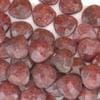
Muscovite Quartzite – Art Smith, Mineralogist-Geologist wrote: I did a microscopic examination of the bead material that you call Muscovite. It is a natural stone, probably a metamorphic rock called quartzite. It is composed of well-fused grains of clear to slightly cloudy quartz with interspearsed flakes of pale tan, slightly iron stained, mica that is probably muscovite. The iron staining seems to be most concentrated on the edge of the muscovite flakes and so emphasizes them when the stone is polished. This is an excellent hard and durable stone that will make good beads, cabochons or other lapidary items.
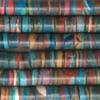
Rainbow Calsilica is an opaque gem with colorful stripes/layers of light and dark blue, green, yellow, orange, red, white/cream, black and even pink. Rainbow Calsilica is a popular gem and is sometimes available as cabochons, carvings and beads. This layered spectrum of vibrant colors is a composition of calcite and silica, found in quartz and a major component of sand. It has been claimed to be mined in Chihuahua, Mexico were it was allegedly discovered in the veins or seams of volcanic rhyolite in the mine with photos of the material in the mine existing, however, when tested by the Swiss Gemological Institute, their findings determined that the base white materials were indeed Calcite, with man-made coloring pigments within the specimens. Whether bonded naturally or synthetically with a clay mineral called allophane, and the reddish layers hematite is present and Celestine in the pitch-dark (black). Natural or not, it is a beautiful stone and jewelry designers love it.
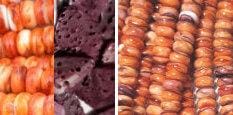
Spiny Oyster shell comes from the Sea of Cortez in Mexico and has always been a favorite of the Native American Indian jewelry artists and can be found in various shades of orange, red and purple. There are limited suppliers for the Spiny Oyster beads and cabochons and we always try to hand pick these strands to eliminate as much white on the beads as possible.
The Lions Paw Scallop Shells are very similar to Spiny Oyster, except that the interior of the shell has less white. They are a peachy orange on one side with purple on the inside thus making are really gorgeous two-color bead! The Lions Paw is found from the Carolina's to the Gulf of Mexico and down the Atlantic side of South America. The Lions Paw beads are not as available on the market as Spiny is and they usually sell out fast! We even have some pendant beads right now!

Sugilite is a somewhat obscure mineral named for the Japanese geologist who discovered the first specimens in 1944, Ken-ichi Sugi. It is becoming very popular in the jewelry trade and is expensive. Sugilite colors range from a pale grayish lavender to a deep dark purple with the bright purple stones having little matrixing or blotches being the most valued. Sugilite is also known under the trade names of "Royal Lavulite" and "Royal Azel"
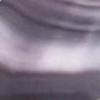
Wampum was officially recognized as a currency by Massachusetts Bay Colony on October 18, 1650 ... strings of eight, 24, 96 and 480 beads has currency values for trading. Also known as quahog shell, a clam with purple and white coloring. Wampum Quahogs shells are found in the waters from Cape Cod south to New York, with a great abundance in Long Island Sound. Usually only available up in the northeast US, recently bead manufactures have been cutting them into beads for jewelry making.




